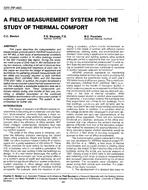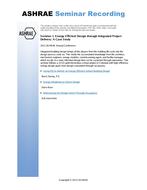Water-based air conditioning systems have attracted an increasing attention because of their smaller amount of refrigerant charge which is considered to cause global warming. They are widely used and there are a lot of requirements for higher efficiency and improvements in workability in building use. Therefore, a water-based hybrid-VRF (h-VRF) was developed. The hydro branch circuit controller (HBC controller), which produces hot and cold water, is installed between the outdoor unit and the indoor unit. The HBC controller is connected to the outdoor unit by two refrigerant pipes and to each indoor unit by a set of two water pipes. It is efficient to transport heat by the refrigerant, because the pressure drop of the refrigerant is less than that of the water. And, by controlling the refrigerant’s pressure, hot and cold water can be produced simultaneously. While the traditional water-based air conditioning system requires four water pipes to realize four different operations, h-VRF only requires two connecting pipes, as many as existing VRF systems.
In this paper, the refrigerant and water flow in the system are explained, and a simulation developed to predict the performance is discussed. The result of the simulation shows good agreement with the experimental data, and an efficient way of operating the system has been shown.
Citation: 2017 Winter Conference, Las Vegas, NV, Conference Papers
Product Details
- Published:
- 2017
- Number of Pages:
- 8
- Units of Measure:
- Dual
- File Size:
- 1 file , 2.6 MB
- Product Code(s):
- D-LV-17-C068


